So far, we have argued that the blundering into the Covid-19 disaster is due to a defect in conceptual thinking, neglecting the crucial role of information in taking decisions under great uncertainty, an inclination to linear thinking, and a lack of fundamental insight in statistical reasoning.
But there is more. What follows is a quite technical story about linear thinkers versus system thinkers, mono-causal and linear thinking, a lack of a systems approach, neglecting interactive cause-effect relations, no clues about simulation models and their limitations, and how to control systems whose functioning many officials do not fully understand.
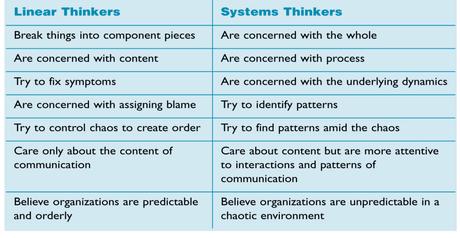
To what extent are more subsystems involved than just the health care system in tackling the crisis? How are they built? What data they use? Is it taken into account that the spread of the virus, the measures that are taken by the government, and the reactions of the citizens form a complex dynamic system?
Monocausal and linear thinking
In our daily “lazy” thinking routines, we assume for the sake of convenience that a problem has only one cause and only one effect. We call that monocausal thinking.

At the same time, it is routinely assumed that the relation between cause and effect is linear. That is, a small magnification in the cause leads to a proportional worsening of the effect.
ICU beds
Initially, the consequence of the COVID-19 crisis was estimated as a shortage of ICU beds. It was thought that expanding ICU beds would be the solution. However, ICU beds are also embedded in a larger logistics and personnel system. More beds alone were not enough, more nursing staff, more intensivists, and cleaners were also needed. More masks, more shorts, more disinfectants, more vents, more gloves, and more aprons are also needed then and are to be resupplied regularly.
Perhaps the capacity of ICU beds and the personnel and logistics in which the ICU beds are embedded can be doubled with some effort but not endlessly. It will become disproportionately more difficult to expand the capacity. There is a non-linear relationship between capacity expansion and time or effort.
Elderly
If someone gets Corona “flu” with serious consequences, the patient is sent to the hospital by a doctor. A certain percentage get serious complaints of the respiratory tract, the brain, the heart, and the kidneys, and will then be admitted to the Intensive Care Unit. Usually, these are patients who suffered at the same time some other health problems, which was consequentially framed as ¨underlying health problems¨, the elderly. However, most of the elderly are in a completely different medical-logistics system, that of old people’s homes and home care.
By thinking in terms of monocausal relations and linearity, as pointed out under de heading ICU beds, this vulnerable group of patients has initially remained completely out of the picture of governments, health authorities, politicians, and the media. Initially, caregivers outside the hospitals were hardly tested? People in elderly care institutions hardly had any protective equipment. And still, some haven´t.
A Systems Approach
A system is a group of interacting or interrelated parts that form an unified whole. A health care system is the organization of people, institutions, and resources that deliver health care services to meet the health needs of target populations. But a health care system is also embedded in other systems, that of political, economic, socio-cultural, technological, ethical, and legal factors.
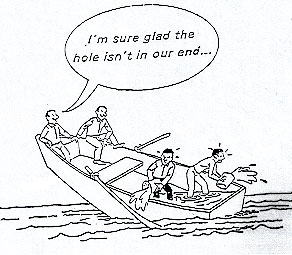
This could have raised a lot of relevant questions and could have prevented many problems at an early stage, such as:
Does the problem require much more expertise than that of epidemiologists, microbiologists, and virologists?
Is a short sickbed for the elderly preferable to long-term ventilation on an IC unit with hardly any extension of life and strong residual complaints?
Isn’t locking up people in their house, forbidding them to receive people, to gather, to have protest demonstrations, etc., contrary to the constitution?
Is it ethical to expose people to willful contamination to gain herd immunity? Do the social and economic costs of a total lockdown outweigh the health gains?
May a cafe refuse people aged seventy or older or people with heart, lung or kidney problems and sugar patients, or people with a Body Mass Index higher than forty?
How many people will not die because of the cleaned-up air from the corona crisis, compared to the number of people who die from the virus? Is this an ethical question as well?
Many people with health complaints fear of becoming infected, so they avoid hospitals, general practices, and pharmacies. Hospitals are overloaded and take fewer patients. This results in that many not-corona patients being treated later and perhaps too late. Patients who may have many more years of life than the victims of the coronavirus, who will usually live a shorter number of years. Is it ethical at all to make these calculations?
There are too many questions outside the medical system that were not asked at the beginning of the COVID-19 outbreak, nor after, but could have been thought up with some conscious and deliberate effort. But it did not happen, due to a lack of basic system thinking skills.
We assume that if government leaders, health authorities, politicians, and people who call themselves journalists had possessed some basic insight in systems and by that, somewhat more pro-active, a lot of time could have been saved to take the right measures.
Interactivity
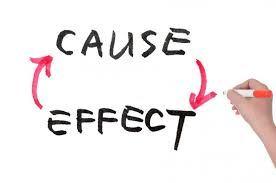
In our Newtionan thinking habits, we assume a one-way communication between cause and effect. However, an effect can go back to the cause, there can be a circular relationship, a feedback loop. As a result, the outcome of a system can often become complex and dynamic. You can therefore no longer indicate what is the cause and what is the effect.
The idea of interaction and feedback loop originates from fairly recent developments in physics, chemistry, biology, genetics, and social psychology. In our opinion, it is completely absent from our routine daily thinking. F.i. few people realize that when they communicate with someone else, they respond to a great extent to what they just before have said. There is a double interaction.
In the COVID-19 crisis, governments and health authorities did never realize the responses of the citizens to announced measures, and therefore could not anticipate possible adverse effects. For instance:
Hoarding after the lock-down where people accumulate food or other items in supermarkets which may have increased the spread of the virus, as such fabricating an ultra-solution.

The closing of cafes, triggering extra traffic to contaminated areas where the closure did not apply. For example in border regions.
Announcing the closing of cafés for the next day, causing ¨last round¨ parties that may have become super spread events.
Vulnerable residents in old people’s homes were infected by care workers because they lacked adequate protective equipment, which in turn contaminated other residents and care workers.
Models
All measures taken are based on simulation models. Attempts have been made to predict the spreading of the virus, using computer models.
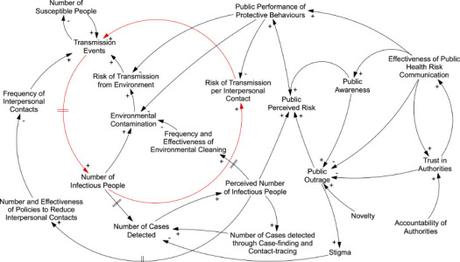
However, even basic scientific facts about the virus remain unknown. How does the virus tolerate heat? How does the virus shed? How might the virus mutate? Do people develop lasting immunity to the virus? Somewhere in the formulas is hidden how many people have been infected but without any symptoms, how many people were infected survived but are still contagious to others, how much does it help when infected people stay at home with their housemates and becomes the virus less virulent with rising outside temperatures?

Every variable is dependent on a number of choices and knowledge gaps. Most relationships between variables are speculative and based on assumptions. For more on this, read our earlier post Thinking about the Spread of the Coronavirus (3) – Information (not) Considered, but to summarize it: Garbage In, Garbage Out.
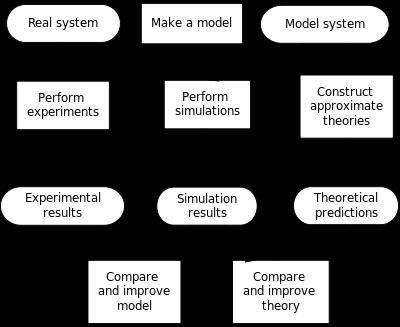
It is even worse. Because many measures are taken at the same time, it is not possible to unravel the effects of each measure (social distancing, full or partial lockdown, testing, tracking apps, contact research, ban on meetings, wearing mouth masks, etc.) individually. This makes it impossible to validate and improve the model and to calculate the effects of measures against the spread of the virus.
Most politicians are unknown with the process of building computer simulation models, and the interplay between experiment, simulation, and theory. They are not aware of the sensitivity of the model to small variations of the input. As a result, they attach too much value to the results of simulations.
Controlled Systems
From the beginning, IC capacity has been central to the approach of governments and health authorities. It is an explicit policy objective: to try to prevent the IC from being overloaded. They used this simple closed-loop model to check the effectivity of their measures.

A target value for the number of occupied ICU beds was set (reference) , measures were taken (controller), in order to reduce the spreading of the virus in the society (system). As a proxy for the spread of the virus the number of occupied ICU beds were measured (sensor) and compared with the target value (reference) and on the basis of this the measures were tightened (controller).
The problem with this approach is that many measures have been taken simultaneously so that the effect of the individual measures cannot be verified. This may have led to an overkill of measures.
Time constants are another problem. The effect of a measure can only be measured after about 12 days, the assumed incubation time. Many countries, but certainly not all, have therefore focused on massive testing of the population and/or voluntary participation in sick notifications.
The same mechanism is used to get out of the lockdown. Some measures are alleviated (shops, theaters, and bars can be open again, meetings with more people are allowed, etc.), but the effect of each alleviation cannot be determined.
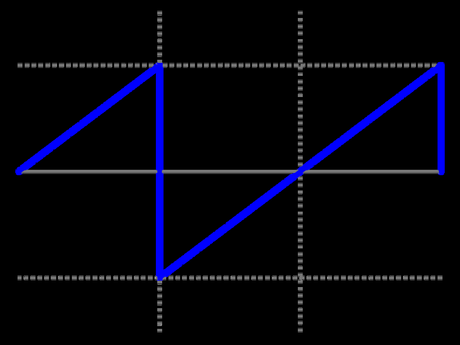
The treacherous is in the delay of the effects. The fact that an alleviated measure has an adverse effect only becomes apparent after approx. 12 days. After a sharp decrease in the number of infections, a measure is lifted. After that, the number of infections increases sharply, here shown as linear, but in reality with an exponential course. a draconian measure is introduced, the number of infections decreases abruptly. The result is a sawtooth-like spread curve.
For this reason, it would be obvious to phase out the measures one at a time, or to spread them over geographical areas, so that the effect can be determined.
To conclude
This crisis makes it clear that the world has become a hugely complex system with a great deal of interdependence., but politicians, health care authorities, and the media are not ready for it. It is time we adapt our medieval thinking to this by thinking in systems with a lot of non-linear interdependence between the variables.
Related posts
- Multi-focal-thinking. Multi-focal lenses help you to see at different distances and depths. Like the eyes that have to accommodate in order to see at different distances and depths, thinking has to be focused to foreground and background phenomena.
- Mainstream Thinking about Designing Systems. Many technical systems, but also economic and organizational systems are organized to the limits of its capabilities. There are no redundancies, all components are trimmed to the bare bones. A little distortion in a daily routine can cause a cascade-effect and leads to a total breakdown of the system.
- How to Fail Most Successfully. Ultra-Solutions are a result of patterned thinking. The idea is that a new but similar problem will be solved by applying a more-of-the-same solution, which solved an earlier problem satisfactory.
